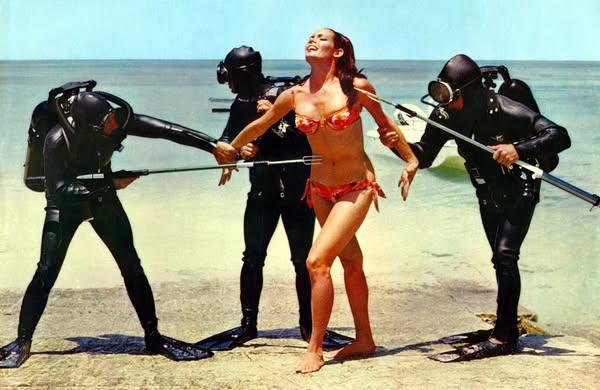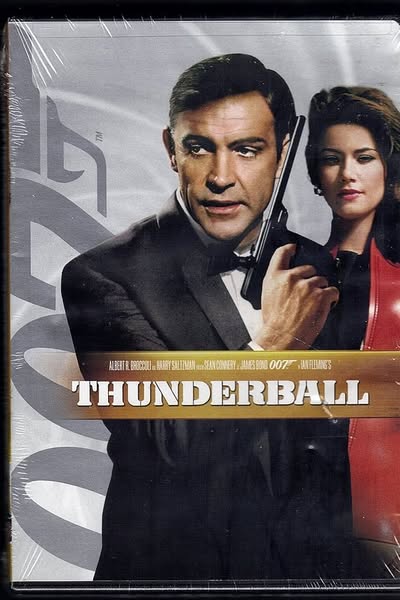Thunderball (1965)

“Thunderball,” directed by Terence Young and released in 1965, is the fourth film in the James Bond series, featuring Sean Connery in his iconic role as the British secret agent. The film is based on Ian Fleming’s novel of the same name and is known for its grand scale, underwater action sequences, and engaging plot.

The story revolves around SPECTRE, the criminal organization that hijacks a NATO bomber and threatens to use its nuclear warheads for ransom. Bond is tasked with recovering the stolen weapons and preventing global catastrophe. His investigation takes him to the Bahamas, where he encounters a beautiful woman named Domino (played by Claudine Auger) and confronts the villainous Emilio Largo (Adolfo Celi), SPECTRE’s second-in-command.
“Thunderball” is notable for its groundbreaking underwater scenes, showcasing thrilling battles and chases that were innovative for the time. The film’s cinematography captures the vibrant beauty of the Caribbean, immersing audiences in a world of luxury and danger.

Connery’s performance as Bond is charismatic and suave, embodying the character’s charm and resourcefulness. The film also features memorable supporting characters, including Fiona Volpe (Luciana Paluzzi), a deadly SPECTRE agent, and Q (Desmond Llewelyn), who provides Bond with essential gadgets.
The film’s score, composed by Monty Norman and John Barry, includes the iconic title song performed by Tom Jones, adding to the film’s memorable atmosphere.
“Thunderball” was a commercial success, becoming one of the highest-grossing films of its time. It solidified the formula for future Bond films, combining action, romance, and espionage with a touch of humor.

In conclusion, “Thunderball” is a classic entry in the James Bond franchise, celebrated for its thrilling action, stunning visuals, and Connery’s memorable portrayal of the legendary spy. Its legacy continues to influence the series and remains a favorite among Bond fans.











